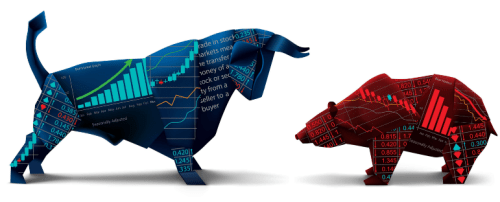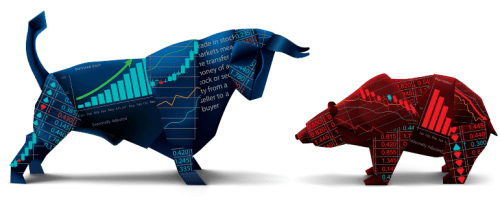
Bear vs Bull Market
Credit: Original article published here.
Since the first of the year the DOW is down approx. 15%. Almost every day in the investing world, you will hear the terms “bull” and “bear” used to describe market conditions. The direction of the market is a major force affecting all industry. Therefore it is important to understand the difference between bear and bull markets.


Simply put, a bull market refers to a market that is on the rise. In such times, investors often have faith that the uptrend will continue over the long term. Typically, in this scenario, the country’s economy is strong and employment levels are high.
By contrast, a bear market is one that is in decline. Share prices are continuously dropping, resulting in a downward trend that investors believe will continue, which, in turn, perpetuates the downward spiral. During a bear market, the economy will typically slow down and unemployment will rise as companies begin laying off workers.
Although a bull or bear market condition is marked by the direction of stock prices, there are some accompanying characteristics:
- Supply and Demand for Securities: In a bull market, many investors are wishing to buy securities while few are willing to sell. In a bear market, the opposite is true as more people are looking to sell than buy.
- Investor Psychology: In a bull market, investors willingly participate in the hope of obtaining a profit. During a bear market, market sentiment is negative as investors are beginning to move their money out of the stock market.
- Change in Economic Activity: A bear market is associated with a weak economy as most businesses are unable to record large profits because consumers are not spending nearly enough. This decline in profits directly affects the way the market values stocks. In a bull market, the reverse occurs, as people have more money to spend and are willing to spend it, which, in turn, drives and strengthens the economy.
As we started off 2020, our business trends pointed to a very robust year with activity up significantly from 2019. The volatility in the stock market has caused some unrest throughout the national and global economies but has not dampened our expectation for 2020. We are encouraged by what we have seen thus far for 2020 and are anticipating a strong year in construction industry for the upper Midwest.





